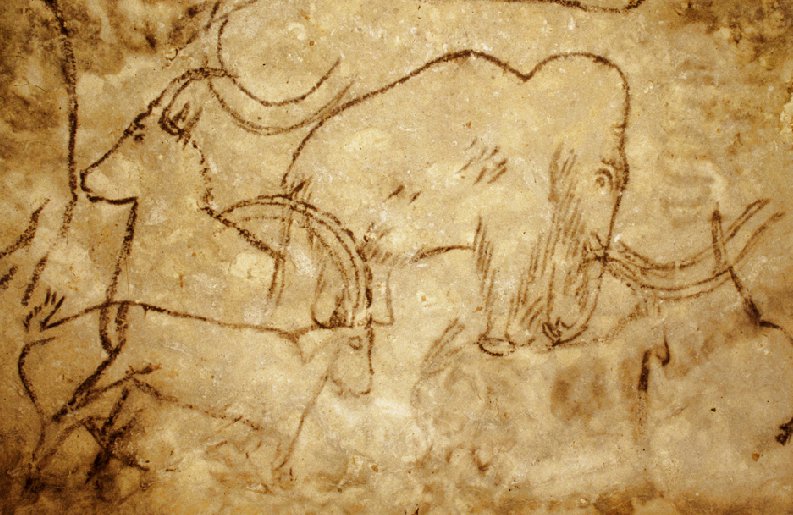|
Rouffignac-Saint-Cernin-de-Reilhac
Rouffignac-Saint-Cernin-de-Reilhac (; oc, Rofinhac e Sent Sarnin de Relhac) is a commune in the Dordogne department in Nouvelle-Aquitaine in southwestern France. Geography Surrounded by rolling hills and agricultural land uses, Rouffignac's nearest communities are the municipalities of Fleurac, St. Geyrac and Saint-Félix-de-Reillac-and-Mortemarts. Montignac is 15 km east. It is located 25 miles southeast of the city of Périgueux. Two tributaries of the Vézère, the Manaurie and the Vimont, run close by. History The Château de l'Herm nearby dates from the 16th century, and construction began in the 15th. It was later abandoned, and Eugène Le Roy used it as a setting in his novel ''Jacquou le Croquant''. The church of Saint-Germain-de-Paris is built in a roman style and has a gothic interior. It was classified as a national monument in 1900. A second church is L'église Saint-Saturnin de Saint-Cernin-de-Reillac. On 1 January 1973, the communes of Saint-Cernin-de-R ... [...More Info...] [...Related Items...] OR: [Wikipedia] [Google] [Baidu] |
Rouffignac Cave
The Rouffignac cave, in the French commune of Rouffignac-Saint-Cernin-de-Reilhac in the Dordogne département, contains over 250 engravings and cave paintings dating back to the Upper Paleolithic. In conjunction with other caves and abris of the Vézère valley, the Rouffignac cave was classified a Monument historique in 1957 and a world heritage site in 1979 by UNESCO as part of the ''Prehistoric Sites and Decorated Caves of the Vézère Valley''. Geography and description of the cave The ''Cave of the hundred mammoths'', also known as ''Miremont cave'', ''Cro des Cluzeau'' or ''Cro de Granville'', is about south of Rouffignac on a hill slope along the right-hand side of the La Binche river, a left tributary of the Manaurie. Perched only about one kilometer farther east on the opposite side of the valley is the little village of Fleurac. The rocks of the cave are flat-lying limestones belonging to the uppermost Coniacian; they are very rich in flint nodules. These rocks toge ... [...More Info...] [...Related Items...] OR: [Wikipedia] [Google] [Baidu] |
Château De L'Herm
Château de l'Herm is a castle in the '' commune'' of Rouffignac-Saint-Cernin-de-Reilhac in the ''départment'' of Dordogne in the Nouvelle-Aquitaine region of France. Construction took place between 1500 and 1520 in the Forêt Barade under the management of Jean de Calvimont, who served in the Bordeaux parliament and was ambassador of Francis I to Spain. The castle was abandoned after the family left in 1605. The moats are still visible. The castle is open to visitors. Eugène Le Roy used the castle as a setting in his 1899 novel ''Jacquou le Croquant'', which uses many real place names and locations. It tells the story of a Barade forest peasant who rebels against the evil comte de Nansac who lives at the Château de l'Herm. It has been listed since 1927 as a ''monument historique ''Monument historique'' () is a designation given to some national heritage sites in France. It may also refer to the state procedure in France by which National Heritage protection is extended ... [...More Info...] [...Related Items...] OR: [Wikipedia] [Google] [Baidu] |
Vézère
The Vézère (; oc, Vesera) is a 211-km-long river in southwestern France. It is an important tributary to the Dordogne. Its source is in the northwestern part of the elevated plateau known as the Massif Central. It flows into the Dordogne near Le Bugue. A tributary of the Vézère is the Corrèze. The Vézère Valley is famed for its prehistoric cave systems, containing numerous cave paintings and hominid remains. UNESCO collectively designated these a World Heritage Site in 1979. Among the sites with remarkable caves is Lascaux. Geography The Vézère takes its source in the bog of Longéroux, on the plateau of Millevaches, in the Massif Central in Corrèze, at 887 meters above sea level, in the commune of Meymac, west of the ''Puy Pendu'' (973 m) in the forest of Longéroux, at the place called ''sources de la Vézère''. It flows into the Dordogne on the right bank at Limeuil, at an altitude of 50 metres. Its main tributary is the Corrèze, their confluence is located in t ... [...More Info...] [...Related Items...] OR: [Wikipedia] [Google] [Baidu] |

